Montreal is a culturally diverse city with vibrant neighborhoods. It blends French and English cultures, offering a unique mix of European and North American ways of life. The city excels in livability metrics, boasting affordable housing, excellent public transit, world-class entertainment, and scenic, diverse communities.
With good healthcare and a thriving economy, Montreal is a good place to live. Montreal’s best neighborhoods have a unique appeal and a high standard of living. Where to stay or live in Montreal depends on your needs and preferences. If you’re searching for the best area for newcomers or short-term visitors, this article answers all your questions.
This guide discusses the best neighborhoods in Montreal, covering everything you need to know. Keep reading to get actionable insights on livability, amenities, and housing across the best Montreal residential areas.
Key Takeaways
- The best neighborhoods in Montreal are Le Plateau-Mont-Royal, Old Montreal, Downtown Montreal, Rosemont-La Petite-Patrie, and Westmount.
- Le Plateau-Mont-Royal suits young professionals, artists, and creatives.
- Old Montreal is best for affluent retirees, history buffs, and upscale professionals.
- Downtown Montreal is ideal for professionals, students, and urban lovers.
- Rosemont-La Petite-Patrie suits eco-conscious families, young professionals, and retirees.
- Westmount is best for affluent families, professionals, and retirees.
Our Evaluation Framework: The Science of Neighborhood Assessment
We selected Montreal’s best neighborhoods using a thorough multidimensional assessment framework. We evaluated many communities and shortlisted 5 standout areas based on some key Montreal livability metrics.
We collected data on key evaluation criteria, accompanied by expert-level analysis of the Montreal neighborhood. Data verification was done before using the information to make decisions. Here at Corporate Stays, our approach is detailed and analytical.
We selected the best neighborhood in Montreal based on the following:
- Career opportunities
- Healthcare
- Safety
- Weather conditions
- Montreal housing options
- Investment potential
- Transit access
- Attractions
Corporate Stays Montreal is committed to selecting strategic neighborhoods. Based on years of operational experience in the city, here are Montreal’s best neighborhoods:
- Le Plateau-Mont-Royal: Creative Density Optimization
- Old Montreal (Vieux-Montreal)
- Downtown Montreal
- Rosemont-La Petite-Patrie
- Westmount
Le Plateau-Mont-Royal: Creative Density Optimization
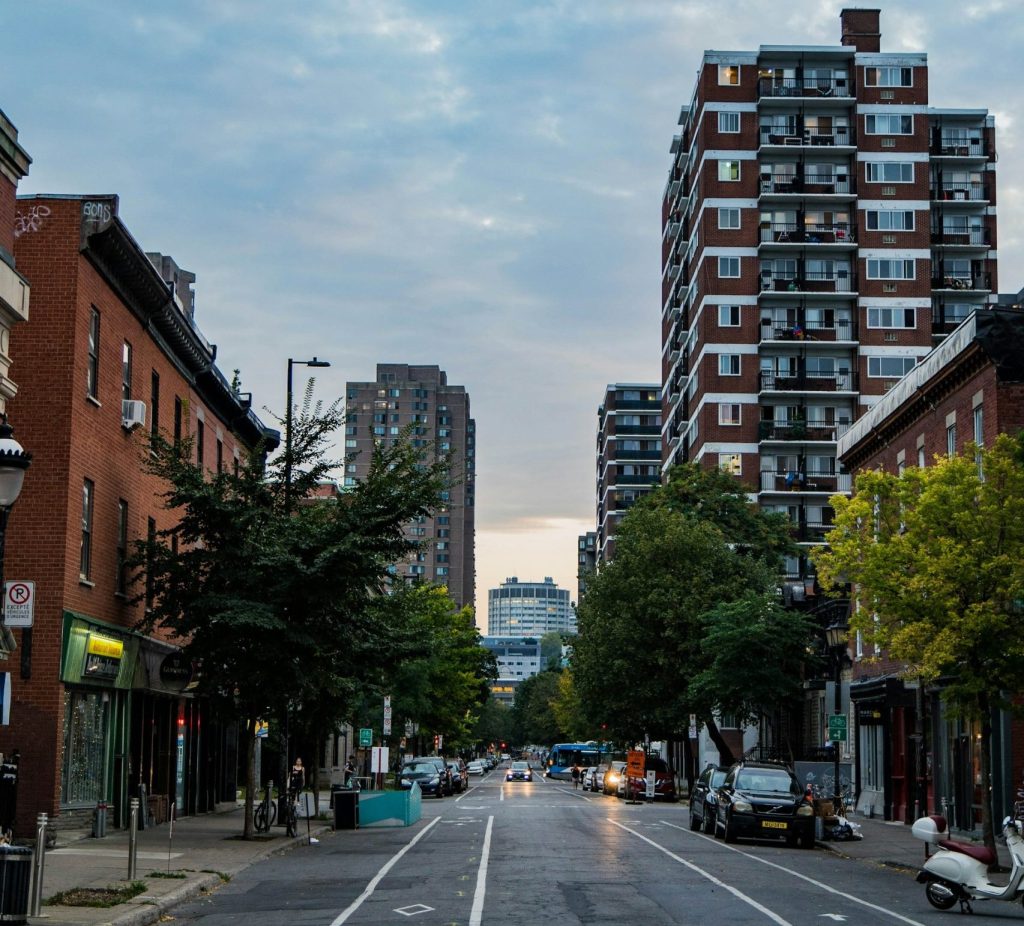
Le Plateau-Mont-Royal is a lively locality known for its bilingual demography (English and French). The streets echo both languages, with more residents being fluent in French. The linguistic fusion creates a welcoming environment, enhancing the neighborhood’s cultural richness.
The Plateau stands out as a hub for creative industries. It hosts a high concentration of artists, musicians, and writers, among the highest in the country. Institutions like the National Theatre School and Les Grands Ballets Canadiens drive the growth of the creative industry. This results in economic impacts through tourism, local spending, and job creation in arts and entertainment.
Architectural preservation is part of the Plateau’s identity, with iconic Victorian houses, duplexes, and triplexes. The old structures are well-maintained, combining historical beauty with modern upgrades and designs. Commercial modernization has transformed Avenue du Mont-Royal into a busy corridor of economic activities.
Cafe culture thrives in this part of Montreal. There is a significant density of cozy cafes along Rue Saint-Denis and Mont-Royal. The neighborhood prioritizes pedestrian engagement, as seen in summer pedestrianization initiatives and bike-friendly streets. It is one of the most walkable areas in the country!
When it comes to housing typology, low-rise multiplexes dominate. Home values range from $600,000 to $800,000, while the average rent for a 1-bedroom apartment is about $1,500. This reflects a high price-to-value ratio and a surge in gentrification. The Plateau offers very appealing living spaces and furnished apartments, striking a balance between heritage, creativity, and modern livability.
Le Plateau-Mont-Royal is Best For: Young professionals, artists, and creatives who thrive in a bilingual, walkable, cafe-rich locality.
Old Montreal (Vieux-Montreal): Historic-Modern Interface
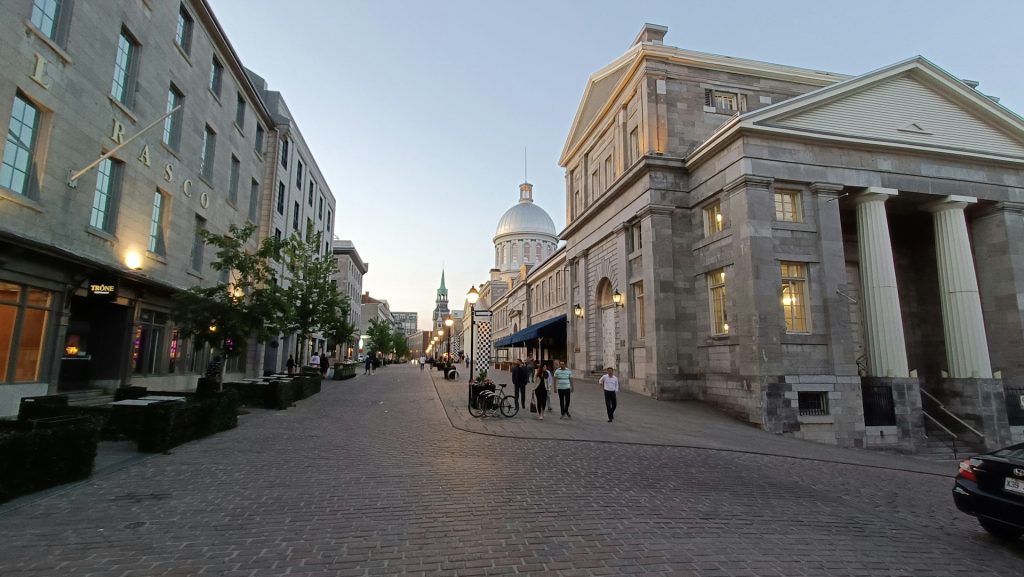
Old Montreal is the historic heart of the city. It has evolved significantly over the years, creating a beautiful residential neighborhood that thrives on tourism. Tourist attractions include landmarks like Notre-Dame Basilica and Place Jacques-Cartier. While the streets are busy with tourists, residential enclaves offer a quiet and serene atmosphere.
It perfectly integrates its cobblestone streets with modern living. Old Montreal takes heritage preservation seriously, with centuries-old buildings meticulously maintained. Strict heritage regulations were enacted to maintain historical integrity while adapting spaces for contemporary use.
The area’s appeal is enhanced by waterfront accessibility along the St. Lawrence River. The Old Port is a hub for outdoor activities, offering public promenades, bike paths, and seasonal activities like ice skating. The neighborhood continues to improve, with recent revitalizations prioritizing green spaces and pedestrian-friendly access.
Commercial evolution has shifted from souvenir-focused storefronts to authentic local integration. Once dominated by trinket shops selling hockey jerseys and other trivial items, the community now has boutique galleries, artisanal bakeries, and restaurants.
Old Montreal is a preserved yet evolving neighborhood. It balances its historic past with a vibrant, appealing present. Residents and visitors coexist, delightfully enjoying the historic atmosphere, heritage-integrated accommodations, and a modern, urban feel.
Old Montreal (Vieux-Montreal) is Best For: Affluent retirees, history buffs, and upscale professionals who cherish heritage, waterfront views, and a tourist-friendly environment.
Downtown Montreal: Urban Core Functionality
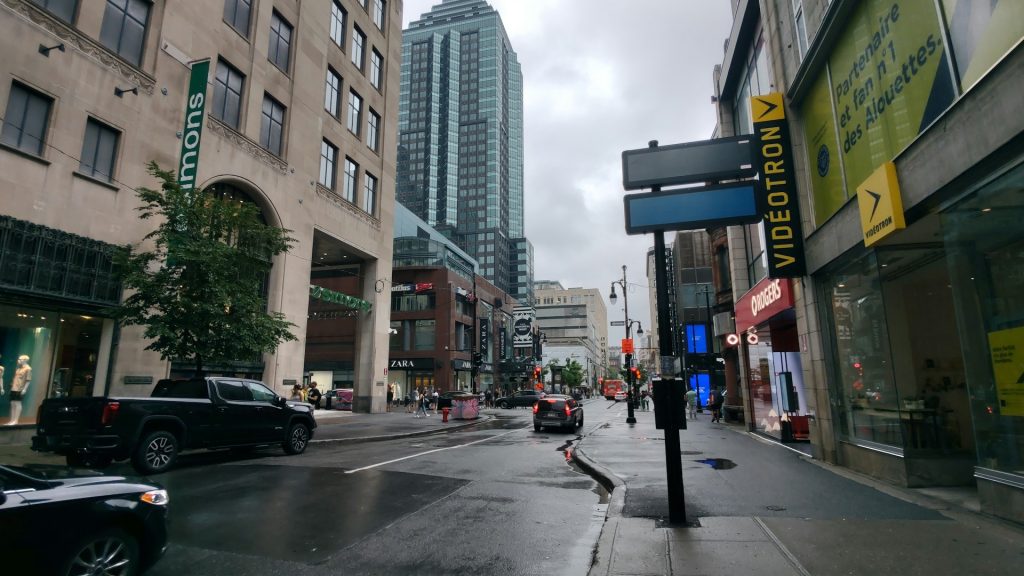
Known as the city’s commercial and cultural center, Downtown Montreal is defined by vertical living in high-rise condos and executive accommodations. Vertical living quality varies; luxury towers, like Tour des Canadiens, provide stunning views and amenities like pools and gyms, while older mid-rises offer more affordable but less upscale housing.
Building stock analysis reveals a mix of modern skyscrapers and preserved pre-war buildings. Glass-and-steel towers are used for offices and residences, yet heritage architecture adds a historic touch. Renovations are usually designed to modernize interiors while retaining facades. This approach ensures optimal functionality while upholding history.
The Underground City (or RESO) is a 33-kilometer network of tunnels that links 60% of key downtown buildings — schools, shops, metro stations, and offices. It provides convenient routes to 500,000 daily commuters, offers weatherproof navigation, and boosts retail with thousands of stores.
Due to vertical living and underground amenities, life during harsh, sub-zero temperatures remains fun. Residents move indoors, enjoying coffee at Place Ville-Marie or shopping without their coats. High density drives a fast-paced, urban lifestyle. However, noise and limited green space are some of the district’s limitations.
University proximity is one of the advantages of living here. McGill and Concordia campuses are close, attracting tens of thousands of students. Affordable rentals, libraries, and nightlife cater to academic life, while research hubs leverage intellectual capital to drive innovation. Being close to universities powers the downtown with youthful energy and an exciting atmosphere.
Cross-seasonal amenity availability varies considerably. Summer features outdoor festivals like Jazz Fest and Just for Laughs, drawing millions to open plazas like Quartier des Spectacles. During the winter, the focus shifts to indoors, with RESO’s food courts and skating rinks keeping people excited. Spring and Fall provide a calmer middle ground – people returning to patios and pedestrian traffic coming back to life.
Downtown Montreal is Best For Professionals, students, and urban enthusiasts who love vertical living, proximity to universities, and a buzzing, connected lifestyle.
Rosemont-La Petite-Patrie: Livability Optimization
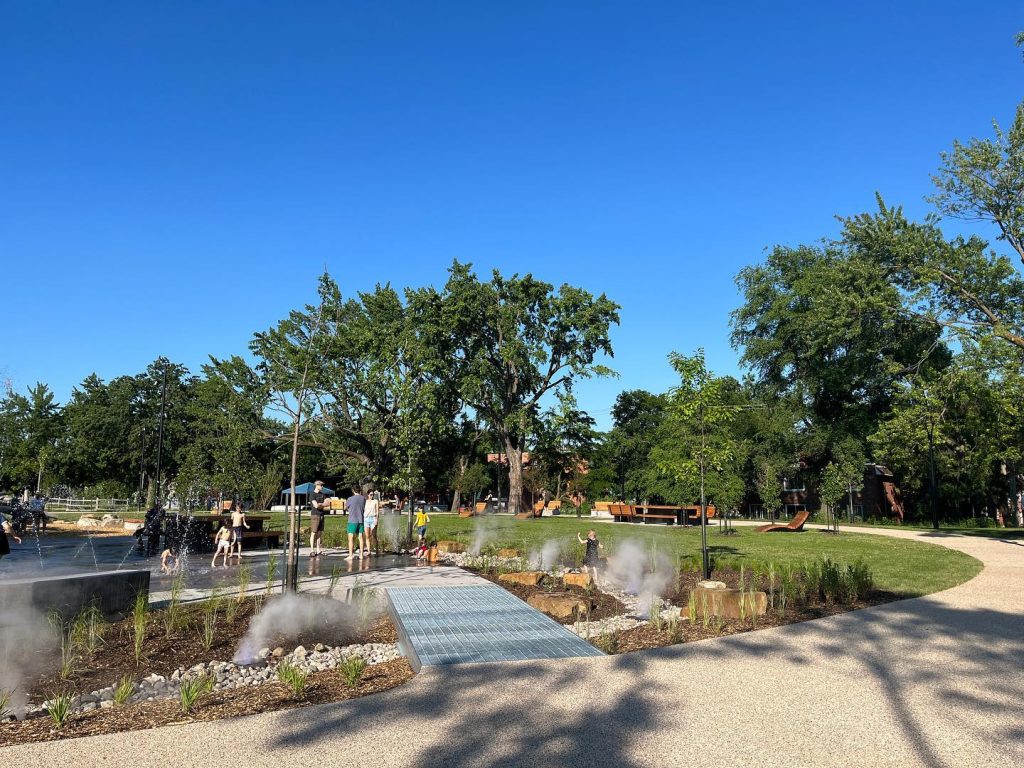
Rosemont-La Petite-Patrie offers harmonious urban living and sustainable practices. Popular for its ecological integration, the neighborhood features many green laneways, public gardens, and parks, such as Maisonneuve and La Fontaine. Residents enjoy lush recreational areas, which enhance the community’s natural appeal.
Urban agriculture is supported here, with policies aimed at providing residents with access to local, sustainable food. Rosemont-La Petite-Patrie has rooftop greenhouses, vegetable farms, and community gardens. Agricultural investments are driven by regulatory flexibility and citizen involvement. As a result, the district is a leader in Montreal’s urban farming industry.
Parks, water play centers, sports facilities, and family-oriented accommodations abound. The neighborhood is safe and enriched with cultural events, such as the Rosemont Street Fair. If you’re looking for a nurturing community, Rosemont-La Petite-Patrie is a neighborhood worth considering.
Thriving commercial hubs attest to their local business sustainability. The commercial centers are diverse, featuring eco-conscious shops, cafes, microbreweries, and fresh produce. This fosters economic resilience!
The cost of housing is competitive and affordable compared with the city-wide benchmarks. Even though apartments dominate, duplexes and condos offer options for families and investors.
Transit connectivity is extensive, with Montreal Metro lines linking the neighborhood to downtown and other key areas. Multi-modal transportation options include bike paths, pedestrian paths, and car-sharing services.
Rosemont-La Petite-Patrie’s residents enjoy good urban planning grounded in ecological and community values. It’s a great place to live if you crave a seamless integration of green living with urban convenience.
Rosemont-La Petite-Patrie is best for eco-conscious families, young professionals, and retirees seeking affordable housing, green spaces, and urban agriculture.
Westmount: Established Affluence Ecosystem
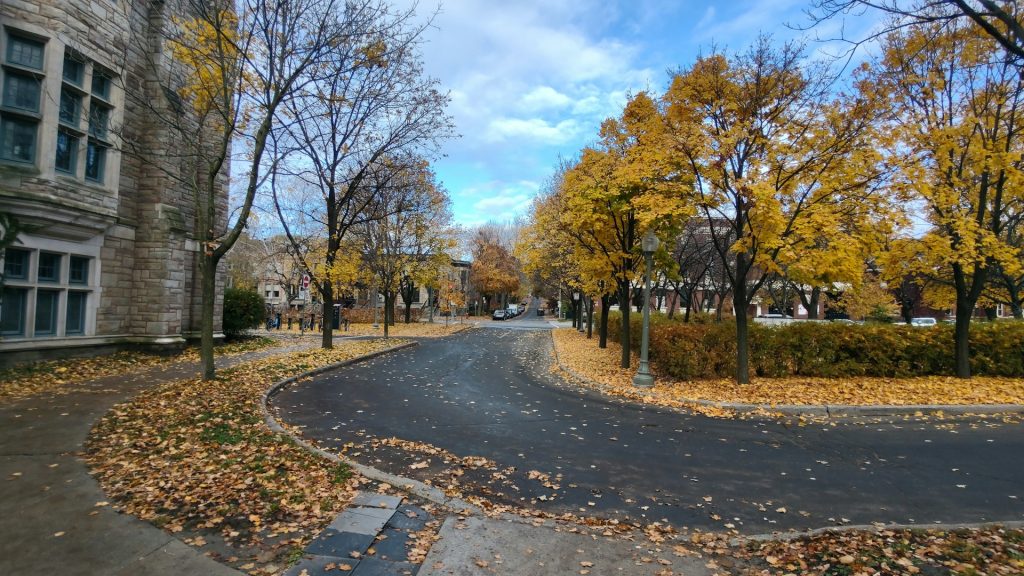
This is an affluent enclave that stands out for its architectural preservation, good educational infrastructure, and unique Anglo-Franco-cultural integration.
Architectural preservation is strong in Westmount, where Victorian, Edwardian, and Georgian homes dominate tree-lined streets. The neighborhood has strict zoning and heritage laws to ensure that landmarks don’t lose their original splendor. Due to its well-maintained aesthetic legacy, the community has a timeless residential appeal.
The educational infrastructure is outstanding. Prestigious institutions like Selwyn House School and The Study offer top-tier private education, while public schools like Westmount High School uphold academic excellence. Dawson College and Marianopolis College are great options for post-secondary students. Here, learning is prioritized across linguistic divides.
Anglo-Franco cultural integration patterns reflect Westmount’s historical roots as an Anglophone stronghold. However, it’s evolving into a bilingual neighborhood. While English still dominates significantly, French fluency is widespread, driven by the province’s language policies and closeness to Francophone communities.
Cultural events, such as the Westmount Arts Festival, celebrate both heritages. These dual cultural experiences enrich social life. That being said, the Anglo legacy still subtly shapes Westmount’s upscale identity.
Its investment appreciation consistency reflects the neighborhood’s real estate appeal. Property values have risen steadily, with the average home price now exceeding $1 million. This trend is due to limited supply, prime location, and heritage allure. The consistent growth offers investors reliable returns.
Westmount is best for affluent families, professionals, and retirees seeking historic architecture, good education, and a bilingual culture. It’s suitable for high-income investors who want consistent property appreciation and a heritage-rich lifestyle.
Explore Corporate Stays’ premium Westmount portfolio for executive relocations.
Emerging Neighborhoods: Next-Generation Opportunities
- Griffintown: Griffintown evolved from an industrial enclave into a high-density neighborhood, featuring modern condo towers. Redevelopment prioritizes sustainability, mixed-use complexes, and historic preservation.
Griffintown is suitable for young professionals, urban lovers, and couples who crave modern, high-density living.
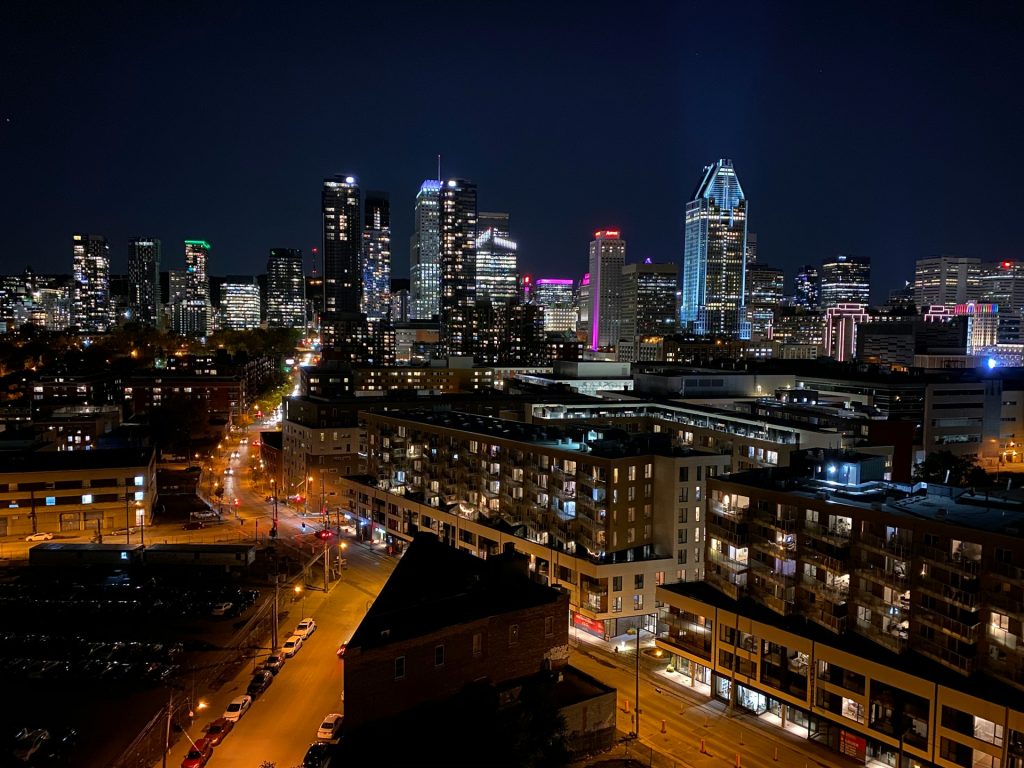
- Pointe-Saint-Charles: It balances rapid gentrification with community preservation. The neighborhood, once working-class, is seeing swift condo development and rising property values. Gentrification is fast-paced, yet it retains its historic allure with row houses and strict local initiatives.
Pointe-Saint-Charles is best suited for artists, young families, and community-minded individuals who want affordable living, heritage preservation, and a vibrant environment.
- Hochelaga-Maisonneuve: The emerging community has undergone a cultural transformation, evolving from industrial roots into an artistic hub. Galleries, cafes, and outdoor spaces boost its appeal. Green metro lines and bike paths enhance accessibility, linking residents to downtown and key locations.
Hochelaga-Maisonneuve is ideal for creatives, budget-conscious young adults, and families looking for a culturally rich and evolving neighborhood.
- Little Italy: Little Italy balances its commercial streets, bustling with cafes, trattorias, and shops, with cozy row houses. Heritage preservation is upheld through the Jean-Talon Market and Italian heritage events, which help maintain its old-world charm.
Little is suitable for foodies, families, and cultural enthusiasts. It’s ideal for individuals who cherish Italian heritage and a balanced urban lifestyle.
- Saint-Henri: This community has seen a creative class migration, with artists, tech workers, and entrepreneurs moving to its affordable lofts and warehouses. This shift boosted the economy, leading to the rise of cafes, startups, and galleries. A former industrial area is now a dynamic, arts-driven enclave.
Saint-Henri is best for artists, tech professionals, and young creatives who love its evolving, artsy vibe. It’s suitable for people seeking affordable, spacious living and economic opportunity.
Explore our property portfolio diversity across Montreal’s emerging neighborhoods.
Comparative Neighborhood Analysis: Decision-Making Framework
1. Cross-Neighborhood Comparison
Montreal Neighborhood Comparison Based on Key Livability Metrics
| Key Metrics | Le Plateau-Mont-Royal | Old Montreal | Downtown Montreal | Rosemont-La Petite-Patrie | Westmount |
| Housing Options | Victorian triplexes, duplexes, condos, single-family homes, co-ops, low-rent units | Lofts, condos, townhouses, boutique apartments, penthouses, short-term rentals | High-rise condos, luxury apartments, student residences, lofts, townhouses, micro-units | Apartments, condos, duplexes, triplexes, single-family homes, retirement homes, townhouses | Apartments, condos, single-family homes, townhouses, duplexes, senior homes |
| Average Monthly Rent (1-bedroom apartment) | $2,160 | $2,031 | $1,900 | $1,717 | $2,185 |
| Transit Options | Metro, buses, Bixi, car-sharing, walking | Metro, buses, Bixi, car-sharing, walking, taxis/ridesharing | Metro, buses, Bixi, commuter trains, walking | Metro, buses, Bixi, car-sharing, walking | Buses, metro, Bixi, walking, car-sharing |
| Job Opportunities | Creative, hospitality, retail, education, healthcare, and professional | Tourism, retail, hospitality, healthcare, education | Retail, tech, bilingual roles, finance, healthcare, professional, hospitality | Retail, healthcare, education, hospitality, admin, non-profit | Retail, healthcare, education, hospitality, professional, and domestic |
| Attractions | Parks, cultural sites, dining, shopping, nightlife, and street art | Landmarks, parks, dining, shopping, arts, museums, waterfront | Sports centers, museums, art galleries, the Underground City, parks, and Schools | Parks, markets, dining, cultural sites, shopping, cafes, recreation | Parks, historical sites, libraries, dining, shopping, arts, recreation |
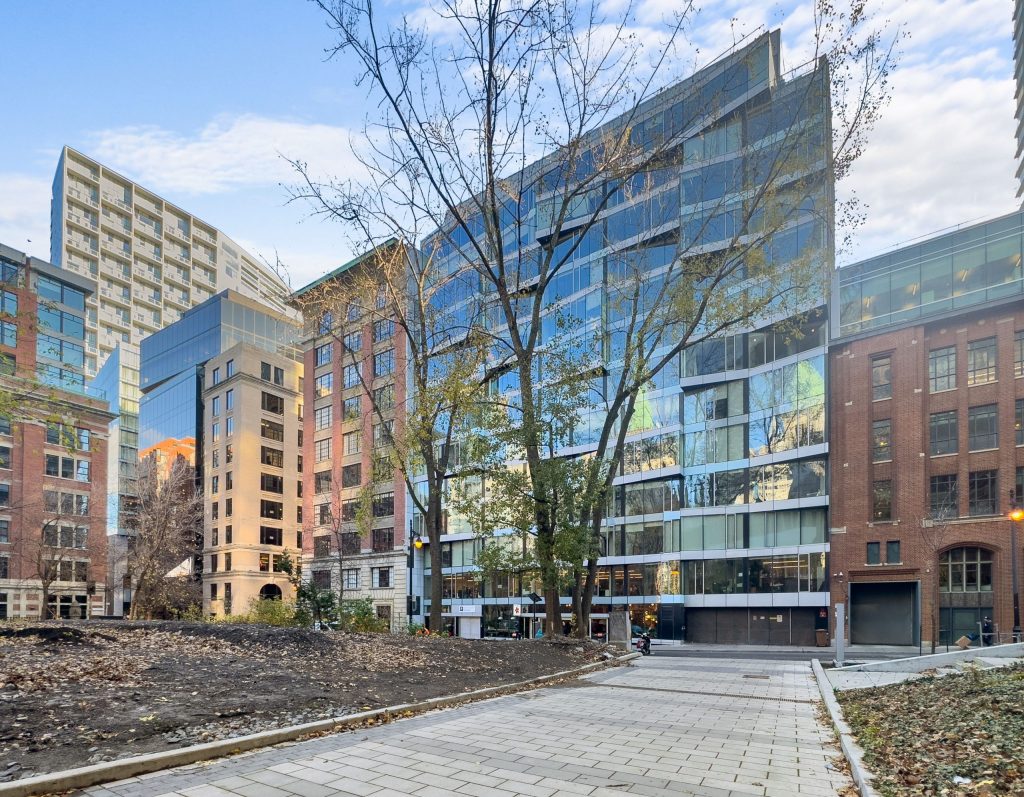
2. Lifestyle-to-Location Alignment
Neighborhoods and Their Unique Lifestyles
| Neighborhoods | Lifestyles |
| Le Plateau-Mont-Royal | Active, social, shopper, artistic, trendy, relaxed, cultural |
| Old Montreal | Cultural, luxury, tourist, artistic, social, foodie, active |
| Downtown Montreal | Professional, student, luxury, cultural, social, foodie |
| Rosemont-La Petite-Patrie | Family-oriented, relaxed, active, trendy, cultural, social |
| Westmount | Luxury, family-oriented, cultural, active, relaxed, social, professional |
3. Budget Optimization Strategies In Montreal
Here’s how to optimize your budget across Montreal’s best neighborhoods:
- Housing: Share apartments ($700-$1,200/month) or rent in affordable areas.
- Dining: Shop at markets or eat at cheap spots like Schwartz’s.
- Transport: Get an STM OPUS pass ($90/month) for the metro and bus, and skip car ownership.
- Shopping: Use thrift stores (e.g., Renaissance) instead of brand-name shops.
- Entertainment: Attend free events (e.g., Just for Laughs street shows) instead of paying for outings.
- Utilities: Bundle internet and phone ($50-$80/month), control heating in the winter.
- Education/Healthcare: Leverage public CEGEPs and clinics to avoid the high cost of private education and healthcare.
4. French Language Proficiency Requirements
French language proficiency requirements in Montreal vary by neighborhood due to cultural, social, and practical factors.
- Le Plateau-Mont-Royal: Predominantly francophone area with local shops and cafes favoring French.
- Old Montreal: Moderate French is useful for tourism jobs, but English is often sufficient due to the presence of international visitors.
- Downtown Montreal: A basic knowledge of French is required. It’s bilingual, with English widely accepted in business and retail.
- Rosemont-La Petite-Patrie: High French proficiency is needed. It’s a francophone hub with community-focused relationships.
- Westmount: Low French requirement because it’s an anglophone enclave that prioritizes English. However, basic French helps socially.
5. Winter Livability Considerations and Seasonal Adaptation
Winter livability and seasonal adaptation in Montreal include:
- Cold: Dress in layers for temperatures as low as -20 °C.
- Heating: Insulate homes and manage high energy costs.
- Transit: Use STM; equip cars with winter tires.
- Snow: shovel or rely on city clearing.
- Activities: shift indoors (malls, museums).
- Footwear: Wear waterproof boots.
- Light: Adapt to short days.
6. Work-Lifestyle Integration Potential By Neighborhood
Work-lifestyle integration in Montreal varies by neighborhood. Here’s a summary of what’s obtainable in key areas.
- Le Plateau-Mont-Royal: Walkable, creative hub, cafe-friendly.
- Old Montreal: Tourism jobs, less residential ease.
- Downtown Montreal: Job-rich, transit-heavy, urban vibe.
- Rosemont-La Petite-Patrie: Local work, affordable, relaxed pace.
- Westmount: Upscale, quiet, near-elite careers.
Practical Considerations for Neighborhood Selection

Here are the key factors to consider when selecting a neighborhood in Montreal.
Bilingualism Requirements
Montreal is a bilingual city, so language is something to consider. Bilingualism requirements in Montreal vary depending on the context and neighborhood.
While English often works, basic French helps with daily life activities like shopping and transit. French fluency is key for local jobs, but less so in the corporate Downtown. Outside anglophone enclaves like Westmount, French boosts integration. The public and private sectors favor French, while the private sectors vary.
Transit System and Ease of Commute
Before selecting a neighborhood, assess transit access, commute times, and walkability. That said, Montreal’s transit system features an efficient metro and extensive bus routes. Key neighborhoods are well-connected, making commuting easy.
Seasonality Factors
Montreal’s weather should shape your neighborhood choice. For instance, summer favors Rosemont-La Petite-Patrie’s markets and parks, while survival in extreme cold is easier Downtown due to weather-shielded transit access.
Work-From-Home Infrastructure
Consider the following:
- Internet Reliability: Downtown boasts fast fiber optics, while Old Montreal’s older buildings may lag.
- Space: Westmount offers larger homes, while Le Plateau-Mont-Royal has cozy apartments.
- Proximity to Cafes: Cafe-rich areas like Rosemont-La Petite-Patrie offer breaks.
- Noise Levels: Quieter Westmount suits focus, while the vibrant Plateau may distract.
- Power: Power stability is key citywide.
Investment Appreciation
If you want to invest in Montreal, research the market thoroughly. Consider transit access, gentrification trends, and tourism impacts for long-term gains.
For instance, Downtown’s commercial growth drives value, while Old Montreal’s historic charm attracts tourists, boosting rental rates. Le Plateau-Mont-Royal’s trendy vibe draws young buyers, ensuring demand, while Westmount’s prestige holds its value steady.
Cultural Integration
Montreal is a culturally diverse city. To integrate into its communities, learn basic French for daily interactions, especially outside Downtown and Westmount. Attend local festivals, join neighborhood groups, and learn to be bilingual.
Relocating to Montreal or moving to another part of the city can be overwhelming. That’s why we are here to help. We provide bilingual services and winter-ready accommodations across neighborhoods.
If you’re a newcomer, Corporate Stays offers a Montreal neighborhood guide designed to help you integrate seamlessly. Our expertise is based on years of operational experience in Montreal’s rental neighborhoods.
Final Thoughts: Which Neighborhood Is Best for You?
Montreal is a multicultural city known for its low cost of living and vibrant neighborhoods. Montreal’s best neighborhoods include Le Plateau-Mont-Royal, Old Montreal, Downtown Montreal, Rosemont-La Petite-Patrie, and Westmount.
The best neighborhood for you depends on who you are, what you do for a living, and your preferences. When selecting a place to live or stay in Montreal, consider the cost of accommodation, transit access, job opportunities, amenities, and entertainment.
Corporate Stays can help sort out your accommodation needs. We provide short-term and furnished rentals in Montreal. Browse our available accommodations in your preferred neighborhood. Book a property with our neighborhood satisfaction guarantee today!
